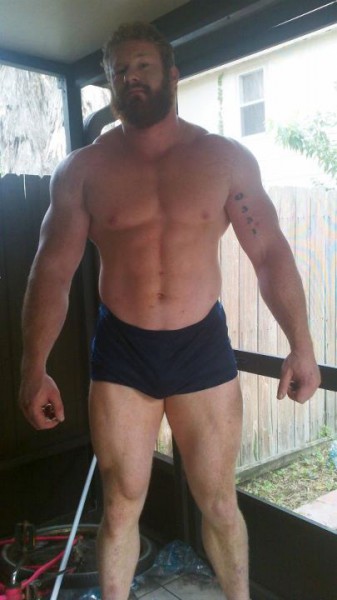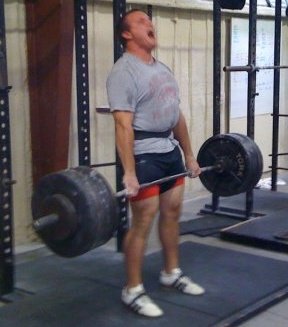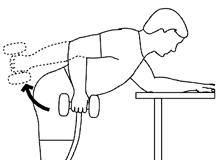My last six nights have looked like this: camping in the truck, camping in the tent, Great American Beer Festival shenanigans, local brewery Shenanigans, GABF shenanigans, and then camping above 10,000 feet in the snow. Needless to say I was a bit knackered after all that adventuring and drinking — IT’S WHAT DUDES DO!
During those six days I trained twice, not including hiking and the inevitable core workout that comes from off-roading for hours at a time. While the first time was at CrossFit Lodo on Friday, the second time was at the gym hotel (which was equipped with machines and dumbbells up to 100 pounds). This is a short guide on training with limited time or equipment, but is mostly focused on being in a different location (as opposed to trying to get a workout at home).
The Basics
Think about what the foundations of your fitness or performance entail: strength, mobility, and endurance. If you’re exclusively a strength athlete, that will include power and swollertrophy. High intensity conditioning and muscular endurance would be relevant to an endurance athlete, fitness competitor, or even “applied fitness” trainees (a term we use in FIT to signify someone who requires fitness for their job, like a fireman or soldier). Mobility is inherently important to all trainees and provides the capacity to get strong and muscular. At the very least your skewed training schedule will give you time to work on your mobility, and that may be enough for some people. You can create a workout that fits your training style, but you can also do something simple to “get the blood flowing”. Increasing the heart rate and moving through a full range of motion — not necessarily at high intensity — can aid recovery, relieve stress (especially if you’re on a busy work trip), and provide a positive stimulus to fuel regular training after returning home.
Bring as much as you can.
If you literally won’t have any equipment, you can improvise with what is available to you. For example, chairs can be dipped on, stepped on, or used to elevate the feet for push-ups. Otherwise bring as much small pieces of equipment as you can. Light bands and a jump rope can easily fit into a carry-on bag for band pulls and very light conditioning. Otherwise bring your mobility gear and work on your problem areas.
What’s the goal?
Now that you clarified what type of trainee you are and have acquired available equipment, what is your goal for the session? If it’s just to get the blood flowing, just jump rope and do some calisthenics. If you are a strength and power athlete, then use speed and explosive work. If you are a general trainee, then use assistance exercises to aid the strength lifts or catch a contagious, World Health Organization-worrying pump. If you are an endurance, applied fitness, or conditioning trainee, then use the light weights and your body weight for higher rep sets for muscular endurance or go ahead and get a high intensity conditioning workout.
Explosive Work
This is probably the most under-utilized style of training in limited environments, yet the most effective. If the dumbbells only go up to 50 pounds, then press them (with a neutral, palm-in grip) for speed doubles or triples on the minute. Hold the dumbbells and do speed squats or deads. Do three pull-ups on the minute as fast as you can. Use different jumps like squat jumps (i.e. preceding the jump with a full squat), high jumps (i.e. jumping as high as you can), broad jumps (for horizontal distance), triple jumps (i.e. same as broad jumps, but using the landing of the first and second jumps as an immediate stretch reflex for subsequent jumps), or bounds (i.e. jumping for horizontal or vertical distance off one foot at a time. In the past I’ve alternated jumps with presses on 30 second intervals.
Keep the speed or plyometric structure simple and do two or three reps on a 30 to 60 second clock and do 5 to 10 sets. The idea of timed plyo work is to demand that the muscle fibers contract as fast as possible while fatigued — the fact that they are doing it in a fatigued state is the thing that they aren’t adapted to (i.e the adaptive stress). Speed work will help improve rate of force development and neuromuscular efficiency.
Assistance
If you’re tired, unmotivated, injured, or have crusty mobility from sitting all day and don’t want to jump around, just hit some assistance exercises that will either push your main lifts or give you some maximum jackage. The former may include dumbbell or banded good mornings, weighted lunges, or even holding a heavy dumbbell and do Zercher or front squats. The latter could include a few sets of dumbbell bench or press, triceps press downs, pull-ups, dumbbell rows, or weighted back extensions. Oh, and curls. Do at least one thousand repetitions of your choice curl and then go out of your way to tell everyone about it (i.e. co-workers, hotel employees, children in the swimming pool, etc.). It’s the curl that will give you the most bang for your buck since it hits both heads of the biceps and incorporates the brachioradialis of the forearm.
Notice that most of these exercises are compound movements that will improve the main lifts, but still improve muscularity. Realistically you could forego all of this advice and just do shirtless chest flies in front of the mirror while chewing gum, but I digress.
You may also remember “When In Doubt…Train Your Back“, a post I wrote about training the back side when short on time. But don’t forget other necessary exercises like farmer’s walks and side planks. Having a whacky schedule is the perfect opportunity to do pre-hab exercises or improve your grip.
Conditioning
It’s really not hard to get a solid high intensity conditioning workout in with limited equipment. In FIT I give plenty of examples, but aim to use compound, multi-joint exercises that use a lot of musculature to use a lot of energy to create a deficit in substrates for a quality adaptive stress. If that sentence doesn’t make sense, then read through FIT because we break it down Crayola style there.
Just Do It
The biggest issue with training during a weird schedule is actually getting off your ass and doing it. On Saturday, we were hungover and tired. In a few hours we were going to jump back into the fray at the GABF, but I decided to get a quick workout in the hotel facility. After a bit of jump rope, dumbbell bench, dumbbell front squat, machine rows, banded good mornings, and back extensions, we felt much better (I did press and weighted pull-ups the day before, otherwise I would have pressed the DBs and done the pull-ups). When you’re on a trip that has halted your training, strung you out, and possibly left you hungover, a quick muscle contraction workout will help immensely.







